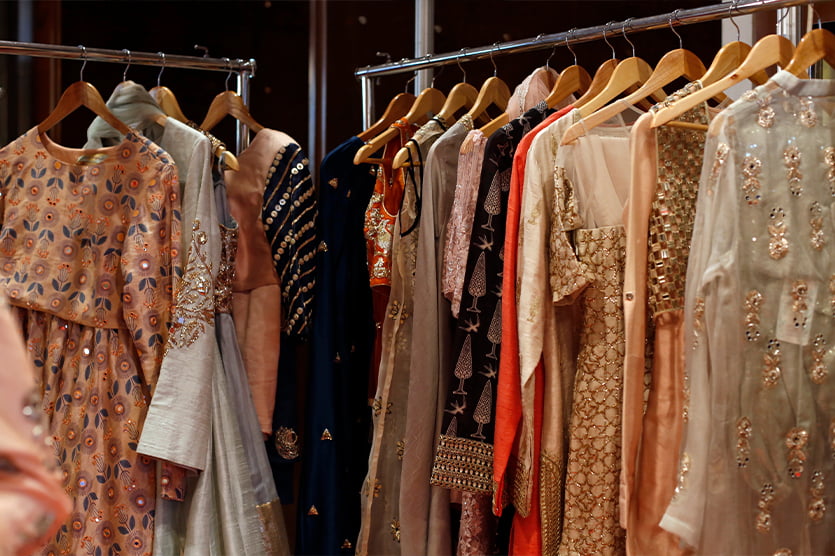In every corner of the globe, traditional attire weaves a vibrant blend of culture, history and identity. Each garment tells a story, echoing the values, beliefs and unique heritage of its wearers. In a world that often seeks to divide, traditional dresses remind us of our shared humanity and the beauty of embracing our differences. From the intricate patterns of a kimono to the colourful embroidery of a Mexican huipil, the diversity among outfits is a testament to the rich mosaic of human expression. Journey to the heart of Africa and you’ll encounter a symphony of textiles and patterns. From the bold kente cloth of Ghana to the flowing robes of the Maasai, traditional African attire celebrates the continent’s diverse ethnicities and histories. Each fabric is imbued with symbolic meaning, conveying messages of unity, status and spiritual connection.
Cross the oceans to Japan, where the artistry of ethnic wear clothes is revered with meticulous attention to detail. The exquisite silk of a kimono, adorned with delicate motifs, reflects Japan’s reverence for nature and craftsmanship. Every stitch is a homage to centuries-old techniques passed down through generations, preserving the beauty and cultural significance of this iconic attire. Across Europe, ethnic attire reflects the continent’s rich tapestry of history and culture. From the opulent ball gowns of the Viennese aristocracy to the rustic charm of Scandinavian folk costumes, each garment is a window into Europe’s diverse heritage. Whether adorned with lace, embroidery, or intricate tailoring, traditional European outfits evoke a sense of nostalgia for bygone eras while celebrating the enduring spirit of cultural identity.
The Essence of Traditional Attire in India
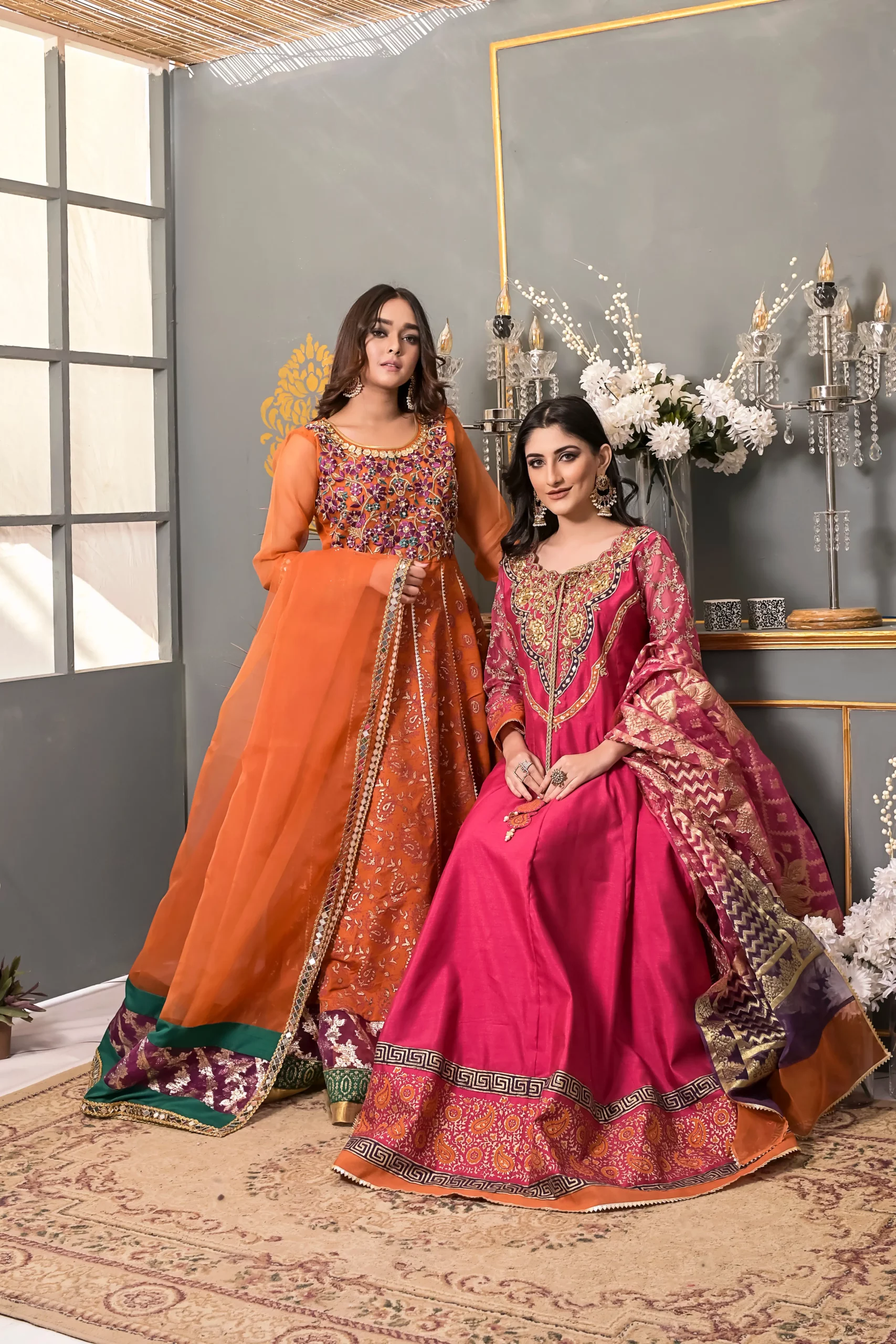
Travel to India and you’ll find yourself dazzled by the kaleidoscope of colours adorning sarees, lehengas and dhotis. Each fold, each hue, carries centuries of tradition, with regional variations reflecting the cultural nuances of different communities. India, often dubbed the land of diversity, is a treasure trove of culture, heritage and traditions. One of the most striking manifestations of the rich culture is reflected in its traditional attire. From the sparkling colours of Rajasthan to the intricate weaves of Assam, Indian traditional dresses encapsulate centuries of tradition, history and craftsmanship. Step into any corner of this vast subcontinent and you’ll be greeted with a myriad of beautiful garments, each telling its own unique story. Whether it’s the splendid sarees of South India, the regal sherwanis of the North, or the graceful lehengas of the West, every garment is a testament to India’s cultural diversity and artistic finesse.
Traditional Dresses for Women
1.Saree: The Epitome of Grace- No exploration of Indian ethnic wear for women is incomplete without paying homage to the quintessential saree. Draped in elegance and steeped in tradition, the saree is a symbol of femininity and grace. Originating thousands of years ago, this versatile garment has transcended generations and continues to be an integral part of Indian culture. From the vibrant silk sarees of Kanchipuram to the delicate chiffon drapes of Bengal, each region boasts its unique style of saree, reflecting the local culture and craftsmanship. The intricate designs, exquisite embroidery and luxurious fabrics make the saree a timeless masterpiece that celebrates the artistry of Indian weavers.
Topwear: Blouse- The saree ensemble comprises several elements, with the blouse being the topmost garment. The blouse can vary in design, from traditional to contemporary, and may feature intricate embroidery, embellishments, or elegant simplicity, depending on the occasion and personal preference.
Bottomwear: Saree Pleats- While the saree itself is considered the bottommost layer, the way it is draped creates the illusion of pleats, adding texture and dimension to the ensemble. The pleats are meticulously arranged and tucked, showcasing the craftsmanship and attention to detail inherent in Indian traditional attire.
Footwear: Kolhapuri Chappals- To complete the saree look, women often opt for traditional footwear such as Kolhapuri chappals. These handmade leather sandals originated in Maharashtra and are known for their durability, comfort, and rustic charm. With their intricate designs and earthy hues, Kolhapuri chappals add a touch of authenticity to the saree ensemble
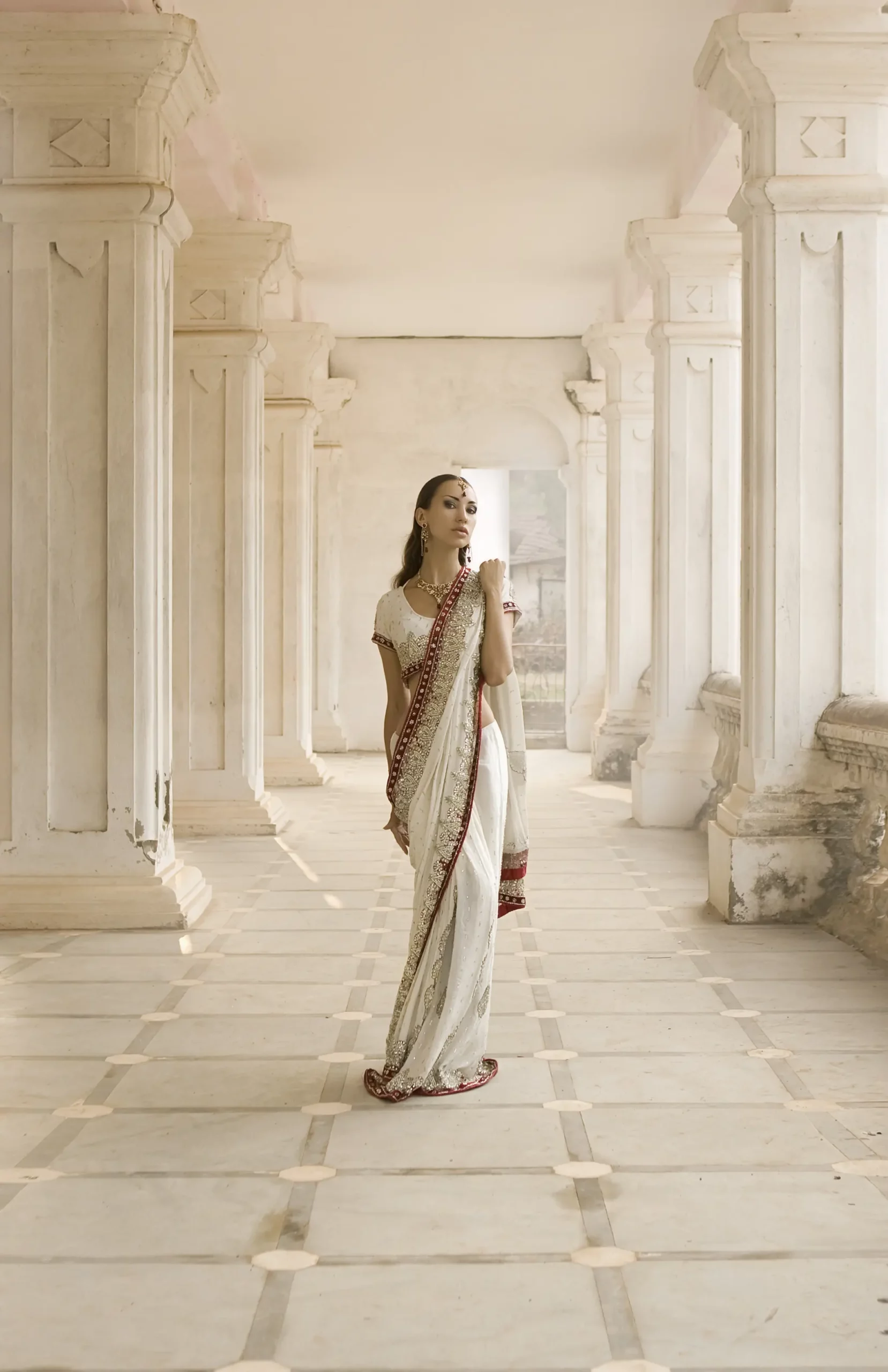
2.Lehenga Choli: A Symphony of Colors and Embroidery- When it comes to bridal attire, few garments can rival the opulence and beauty of the lehenga choli. Adorned with intricate embroidery, dazzling embellishments and vibrant hues, the lehenga dresses for parties are the epitome of bridal elegance in India. Originating from the royal courts of ancient India, this regal ensemble has stood the test of time and continues to reign supreme in the world of Indian fashion. From the ornate zardozi work of Lucknow to the mirror work of Gujarat, each region boasts its signature style of embroidery, adding to the allure of the lehenga choli. Whether it’s a traditional red ensemble for a North Indian bride or a pastel-coloured creation for a South Indian wedding, the lehenga choli captures the essence of Indian craftsmanship and cultural heritage.
Topwear: Choli- The choli is a form-fitting blouse that accentuates the curves of the upper body. It can be adorned with embroidery, beads, sequins, or other embellishments, making it a focal point of the lehenga ensemble. The choli can vary in style, from traditional to modern, catering to individual tastes and preferences.
Bottomwear: Lehenga- The lehenga is a voluminous skirt that adds drama and elegance to the ensemble. Made from luxurious fabrics such as silk, chiffon, or velvet, the lehenga is often embellished with intricate embroidery, zari work, or mirror work, creating a stunning visual impact. The silhouette and length of the lehenga can vary, ranging from traditional to contemporary styles.
Footwear: Mojris- To complement the opulence of the lehenga choli, women often opt for traditional footwear such as mojris. These handcrafted leather shoes feature intricate embroidery, beadwork, and embellishments, adding a touch of glamour to the ensemble. Mojris are not only stylish but also comfortable, making them the perfect choice for weddings and festive occasions.
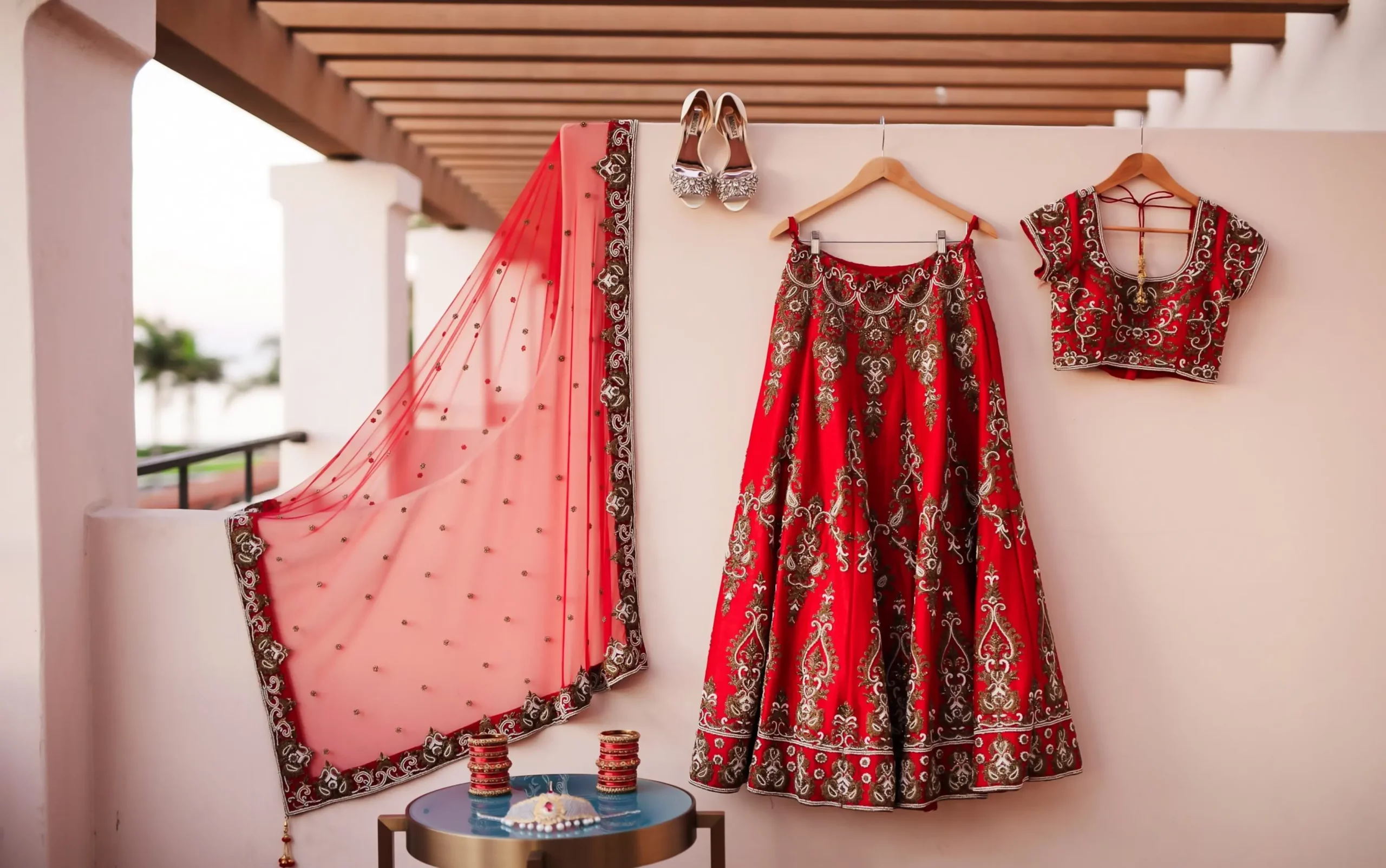
Ethnic Wear for Men
1.Kurta-Pajama: Tale of Timeless Sophistication- For men, the kurta-pajama holds a special place in the realm of ethnic wear clothes . With its simple yet elegant design, this ensemble exudes sophistication and charm. Whether it’s a casual cotton kurta for everyday wear or an intricately embroidered silk kurta for special occasions, the versatility of this attire makes it a wardrobe staple for men across India. The kurta-pajama is not just a garment; it’s a symbol of tradition and cultural heritage. From the vibrant colours of Rajasthan to the earthy tones of Punjab, each region adds its distinct flavour to this classic ensemble, making it a reflection of India’s diverse cultural landscape.
Topwear: Kurta- The kurta is a long, loose-fitting tunic that can vary in length and style. It is typically adorned with intricate embroidery, button detailing, or subtle embellishments, adding a touch of refinement to the ensemble. The kurta can be made from various fabrics, including cotton, silk, or linen, depending on the occasion and personal preference.
Bottomwear: Pajama- The pyjama is a comfortable and airy alternative to traditional trousers, featuring a relaxed fit and a drawstring waistband for ease of wear. It complements the kurta perfectly, creating a cohesive and stylish ensemble. The pyjama can be plain or embellished, depending on the desired look and level of formality.
Footwear: Mojdis- To complete the kurta pyjama look, men often opt for traditional footwear such as mojdis. These handmade leather shoes feature intricate embroidery, beadwork, or embellishments, adding a touch of elegance to the ensemble. Mojdis are available in a variety of styles and colours, making them a versatile choice for different occasions.

2.Sherwani: Regal Elegance Personified- For special occasions such as weddings and formal events, men often opt for the sherwani, a majestic ensemble that exudes regal charm and sophistication. Originating from the Mughal era, the sherwani is characterized by its long, tailored coat-like silhouette and rich embellishments, making it a symbol of aristocracy and grandeur.
Topwear: Sherwani- The sherwani is the centrepiece of the ensemble, featuring intricate embroidery, embellishments, and ornate detailing. It is typically made from luxurious fabrics such as silk, velvet, or brocade, adding to its opulent appeal. The silhouette and length of the sherwani can vary, ranging from traditional to contemporary styles.
Bottomwear: Churidar Pyjama- The sherwani is typically paired with churidar pyjamas, which are snug-fitting trousers with gathered folds at the ankles. This traditional bottomwear adds a touch of elegance to the ensemble, complementing the regal aesthetic of the sherwani. Churidar pyjamas are available in various fabrics and colours, allowing men to customize their look according to their preferences.
Footwear: Juttis- To complete the sherwani ensemble, men often opt for traditional footwear such as juttis. These handmade leather shoes feature intricate embroidery, embellishments, and decorative elements, adding a touch of sophistication to the outfit. Juttis are available in a variety of styles and designs, making them a popular choice for weddings and formal events.
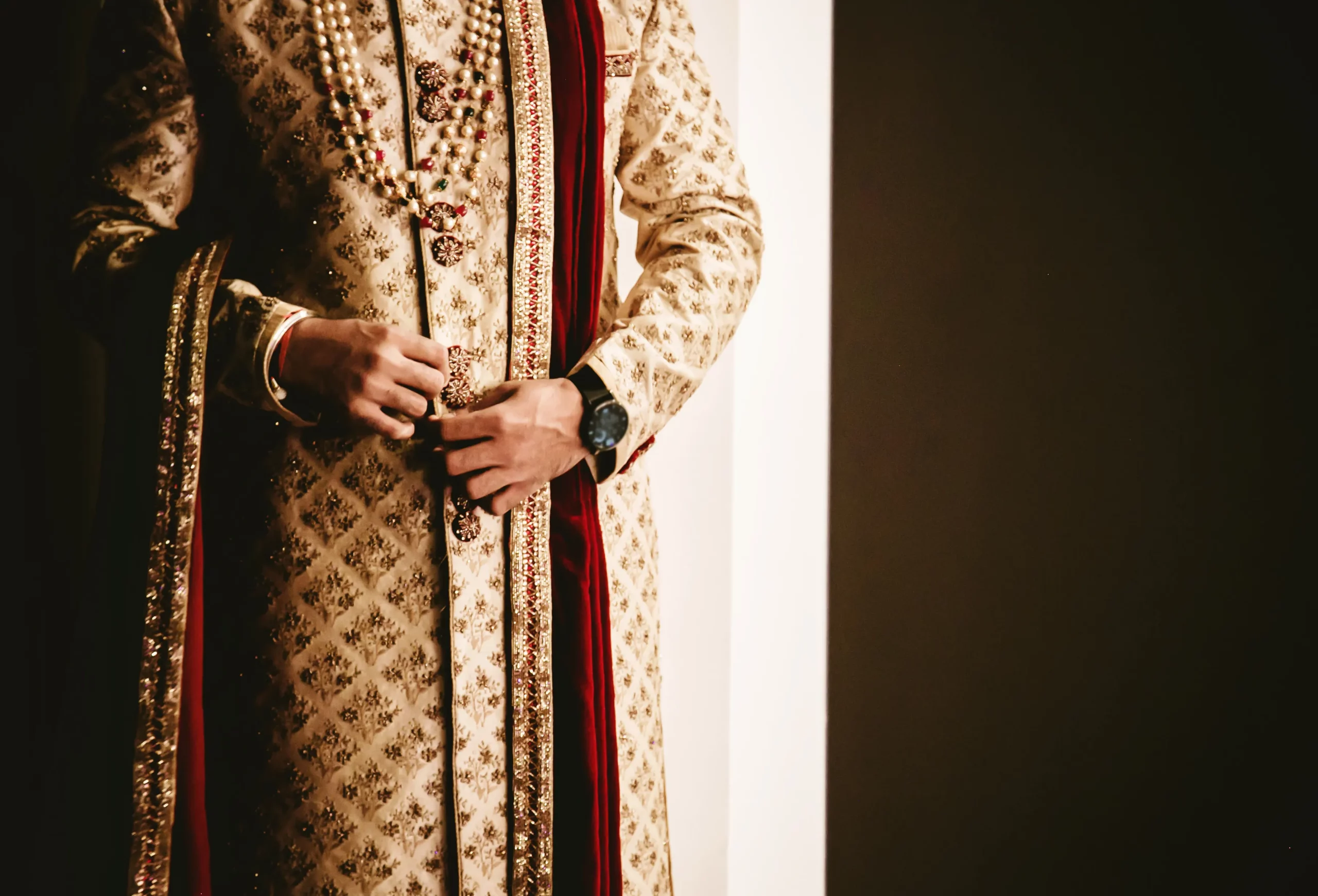
On the journey through the diverse landscape of Indian attire, one thing becomes abundantly clear – the beauty of India lies in its diversity. Choose from an exclusive range of traditional clothes for men and women and slay it on every occasion. From the bustling streets of Mumbai to the tranquil backwaters of Kerala, each region has its unique style of dressing, reflecting the diversity of Indian culture and heritage. Through its ethnic attire, India pays homage to its glorious past while embracing the winds of change. From the intricate weaves of Banaras to the dazzling embroideries of Lucknow, Indian traditional dresses continue to captivate hearts and inspire awe, transcending the boundaries of time and space.
So, the next time you don a saree or a kurta-pajama, take a moment to appreciate the craftsmanship and artistry that went into creating these timeless ensembles. For in each fold of fabric lies a story of tradition, culture and the indomitable spirit of India. Step into the world of fashion with LaFetch, where we celebrate the dynamic evolution of style and the enduring charm of expressive clothing. Uncover the freshest and most stylish ensembles from your favourite brands and designers, meticulously curated and conveniently showcased at LaFetch. Dive deeper into the realm of fashion by exploring our website for further details and inspiration.
